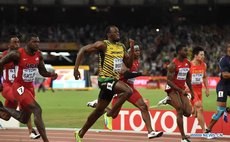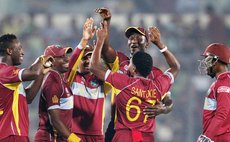Growing into the mantle of the captaincy
Already there is talk about inadequacy of the young Jason Holder in the job of the captaincy of the West Indies cricket team. It has even been said he cannot set a field. By this I presume it is meant he fails to place fielders in positions resulting in catches being taken or runs saving effected for his bowlers. Such a failing is generally passed off as a marked deficiency in experience. However, this may not always be so. I recall in the year 1973 seeing West Indies against Australia at Kensington Oval, Barbados with Rohan Kanhai as the West Indies captain. Kanhai had played 66 Test matches up to that point and 15 of them had been under Frank Worrell, considered perhaps the finest tutor one might have found available on the art of leadership.
Scores in this match were: Australia 324 and 300 for 2 declared, West Indies 391 and 36 without loss. The match was drawn. My most significant memory from the tactical point of view was the second innings of the Australian Doug Walters 102 not out. From my recollection Walters hardly played to the offside and gathered most of his runs through midwicket, lofting regularly over a fielder positioned at short midwicket. Kanhai neither placed the fielder deeper nor found it necessary to employ a second midwicket – one in and one out. To me this was flabbergasting, altogether a wanton giving away of runs.
Much as I was appalled at Kanhai's profligacy, it has dawned upon me much later that things could have been much different if he had had superior pace bowling at his disposal. His pacers were the lukewarm Vanburn Holder and Keith Boyce.
Australia won that 1973 series in the Caribbean 2-nil. Contrast this with three months later, Kanhai again captaining West Indies against England in England. Kanhai won the series 2-nil with one match drawn. It may not really have been any significant improvement in the pace bowling that accounted for the change of fortune for West Indies. Just perhaps the change of climate and West Indies' authoritative batsmanship.
This latter obviously has a lot to do with any team performance. In England in 1973 West Indies depended on batsmen like Roy Fredericks, Kanhai himself, Alvin Kallicharran, Clive Lloyd and Gary Sobers – four of the five having at one time or another filled the captaincy with distinction!
What is the slot into which we are asking young Jason Holder to fit within the current situation? We lack dependable batsmen. Our pace bowling is highly deficient. Spin is anaemic and fielding is feeble – and we here expand our focus to entertain both Tests and one day internationals. It is not an enviable position for him, having to tailor a suit from meager amounts of cloth while still having to address his own personal need for technical development.
Very salient question; how or, indeed, where do we begin? In basic terms, a house takes shape from the plan which in itself predicates the required materials, both in quality and quantity. At the very best we need four high quality opening bowlers. At the very least you need three and a half! By half I mean a class all-rounder-one who knows and expertly fulfills his role in the side. Jason Holder and Carlos Brathwaite, under a fully expanded optimism, can only reasonably stand in as mere supporting bowlers in a decent squad of new ball bowlers. They lack venomous speed and are not blessed with either incisive penetration or restricting accuracy. Their bowling is top of the menu for accredited batmen.
To fill the void, it is necessary to recruit three or even four young speedsters from the youth team. In a best case scenario these youngsters would benefit from prolonged sessions of full scale tutelage in which they are well honed into the finished product where their speeds range between 83 and 87 miles per hour. But they must feature exceptional enhanced menace – without taint of wastefulness. Bear in mind both Holder and Brathwaite themselves must undergo this training prescribed for the four youths. Prospective spinners, too, must also go through similar refining processes and inclusive of fitness elevation well above what we currently have on exhibition.
Very well then. If we can achieve the desired package of improvement to our bowling and fielding, we would be in position to adequately address our batting. We need strength in our bowling for our batting to become companion in an elite calibration of success.
These are highly technical times and the place and validity of the bowling machine is not to be doubted. As a device to training it is by now an irreplaceable mechanical device. Yet, there is one other area still to be envisaged. That is the requirement of giving our players ample practice on playing surfaces which are the equivalent of the type upon which they expect to perform on tour overseas. All this computes into the sort of finishing school both for our players in general and our captain in particular. Holder is still to elevate himself in all aspects as allrounder. One wonders whether such areas of thinking cross the mind of our regional authorities. Growing into the mantle of the captaincy may not be as straightforward as some would think.




